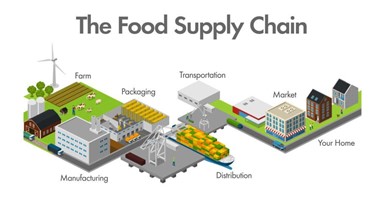As of January 1, 2021, the formal trading relationship between the United Kingdom (UK) and CARIFORUM countries (with the exception of Haiti) is no longer governed by the Economic Partnership Agreement signed between the European Union (EU) and CARIFORUM countries (EU-CARIFORUM EPA) in 2008. Instead, while that agreement continues between the remaining EU-27 and CARIFORUM countries, the new UK-CARIFORUM Economic Partnership Agreement (UK-CARIFORUM EPA) provisionally applies to UK-CARIFORUM trade until ratified by all parties. As with any trade agreement, market access on paper is of little value unless firms can convert it into meaningful market penetration in practice. This article explores how CARIFORUM countries could make this ‘new’ agreement work for deepening UK-CARIFORUM trade.
UK-CARIFORUM trade
The UK-CARIFORUM EPA provides duty-free and quota-free access for goods, preferential access for services providers and investors, among other things. The novelty of the agreement applies more so to its date of signature than its substance as it merely replicates or ‘rolls over’, to the extent practicable, the provisions of the EU-CARIFORUM EPA to ensure trade continuity between the UK and CARIFORUM countries once the former had left the EU. As such, the market access conditions CARIFORUM exporters face in the UK market, and vice versa, remain unchanged in substance from what obtained under the EU-CARIFORUM EPA.
Preserving post-Brexit access to the UK market for CARIFORUM exporters was critical for the region as the UK was a major export market within the EU for many CARIFORUM countries and the major destination for certain CARIFORUM exports like rum, bananas and sugar. It is also an export destination for Trinidad’s methanol and liquified natural gas (LNG) exports. The UK-based Caribbean diaspora community is a key demandeur of CARIFORUM products such as rum, sauces, seasonings, biscuits and other ‘nostalgic’ goods.
The Ex Post Evaluation of the EU-CARIFORUM EPA Report released by the European Commission last year noted that many CARIFORUM producers also used the UK as an entry point into the EU market and identified the Caribbean diaspora in the UK as ‘a key facilitating factor’. Using the UK as an entry point might no longer be that attractive an option for CARIFORUM firms given that the UK is no longer within the EU single market or customs union.
Overall, however, trade between the UK and CARIFORUM has been on a general decline, according to data from the UK Office of National Statistics. Over the twenty year period between 2000 and 2020, UK imports from CARIFORUM countries declined as a percentage of UK imports, except for a spike to 0.53% in 2009, immediately after the signing of the EU-CARIFORUM EPA. In spite of this, the UK remains a major source market for tourist arrivals to the region, and for some CARIFORUM countries like Barbados, the main source for FDI in the tourism sector and second home market.
Deepening UK-CARIFORUM relations
Export diversification is one of the strategies identified by CARIFORUM countries as part of their post-COVID-19 recovery efforts. In light of the above, there is clearly scope for both expanding and diversifying current UK-CARIFORUM trade away from mostly low-value added products and into higher value manufactured goods and high value-added services. There is scope for encouraging greater UK FDI into the region outside of traditional sectors like tourism and real estate and into renewable energy, education, health and other sectors linked to the UN sustainable development goals (SDGs). The UK-CARIFORUM EPA’s Protocol III on Cultural Cooperation (the Cultural Protocol) which replicates that of the EU-CARIFORUM EPA, can be leveraged to promote greater UK-CARIFORUM trade in the creative industries through, for instance, joint film and music productions.
Deepening UK-CARIFORUM relations appears to be a goal for both regions as evinced by the Action Plan and communique released from the Tenth UK-Caribbean Ministerial Forum held in March 2021. Trade and commercial relations was one of the six substantive areas of joint action identified. Among the goals under that action item are the establishment of a UK-Caribbean Business-to-Business (B2B) Roundtable, commitment to identify opportunities to use the significant capacity available for export credit financing support to the region through UK Export Finance (UKEF), to promote and expand UK-Caribbean trade flows and to further reduce market access barriers for one another’s exporters. In addition to this, the UK also expanded its diplomatic footprint in the Caribbean by opening new permanent missions in some CARIFORUM Member States in 2018 and in 2020 appointed a Trade Envoy for the twelve Commonwealth Caribbean countries.
Recommendations
In addition to the commitments made under the Action Plan, there are some concrete ways in which the UK-CARIFORUM EPA can be utilized to deepen post-Brexit UK-CARIFORUM trade and investment. These include the following:
- Raise awareness by both CARIFORUM and UK firms of the market access opportunities under the UK-CARIFORUM EPA. Many firms remain unaware of these opportunities;
- Accelerate the establishment of the proposed UK-Caribbean B2B Roundtable and set concrete deliverables for what this roundtable will seek to achieve;
- Promote greater ties between CARIFORUM-UK businesses to encourage greater information-sharing on market and investment opportunities. This could be done, for example, through the B2B Roundtable, as well as through formalized links between the Chambers of Commerce and industry associations of the region and in the UK;
- Make greater use of existing institutions like the Caribbean Chamber of Commerce in Europe, whose remit also extends to the UK, to promote greater links between UK and CARIFORUM-based businesses;
- Explore ways in which the region, including regional institutions like Caribbean Export, can work more closely with the the UK Trade Envoy for the Caribbean, the UK missions, UK Export Finance (UKEF) and other trade-related UK agencies to promote greater UK-CARIFORUM trade;
- Conduct a study to determine the current barriers impacting CARIFORUM businesses seeking to access the UK market and propose solutions for how these could be overcome to promote greater CARIFORUM-UK trade;
- Conduct a study on the ways in which the new EU-UK trading relationship impacts the use of the UK as an entry point to the EU and ways in which this could be mitigated;
- Better leverage the UK-based Caribbean diaspora for enhancing UK-CARIFORUM trade and investment. Aside from the usual benefits of remittances and diaspora FDI, the diaspora could also provide market intelligence, business mentoring and coaching for CARIFORUM entrepreneurs interested in trading with UK firms or establishing a presence in the UK;
- Make greater use of economic diplomacy by leveraging CARIFORUM countries’ diplomatic missions in the UK to identify opportunities for UK-CARIFORUM trade and investment;
- Accelerate the establishment of the joint institutions provided for under the UK-CARIFORUM EPA.



